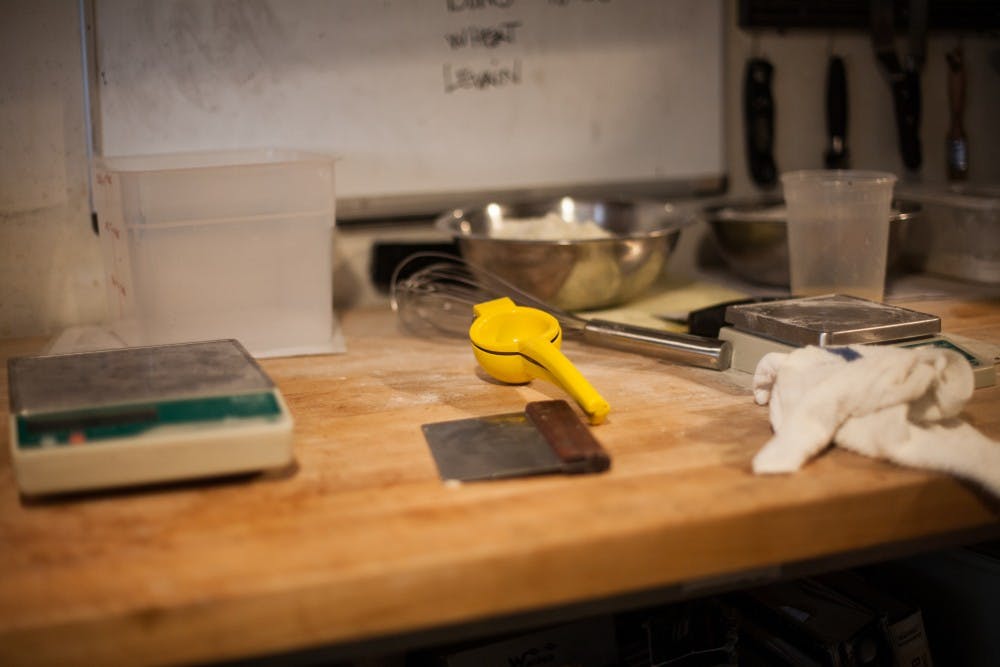Breakfast and Brunch: 7:00 a.m.–2:00 p.m.
Somewhere in the basement of the kitchen an alarm is going off. Knives are already drumming against cutting boards. A line cook tosses an egg on the fry top for the first ticket of the day. Produce trucks clog South Street as the sun rises over Philadelphia.
In Queen Village, a few blocks over from South Street, is Hungry Pigeon, the restaurant Philly Mag named Philadelphia’s best. And wouldn’t it be glamorous to cook at a big city’s best restaurant?
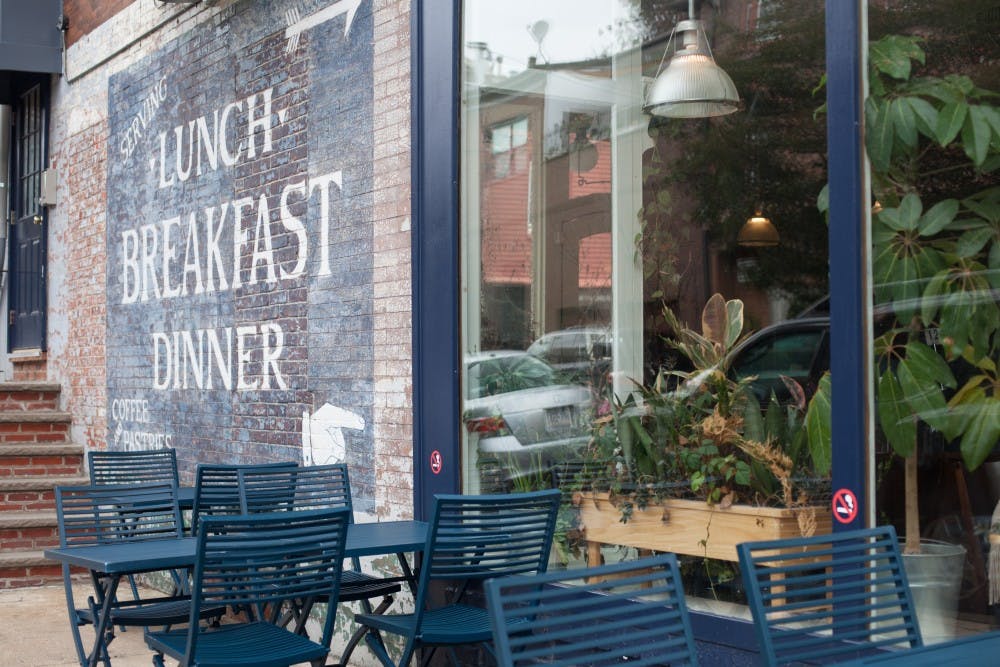
This is where you start—working brunch. Any competent adult, let alone any halfway decent line cook, can throw together an egg sandwich and fry a few sausage links, right?
But you have to serve your time before you make it to the dinner shift. And don’t dream of having weekends off. Saturdays are for normal humans with normal jobs who want to have a lazy morning and eat a meal they could’ve easily cooked at home before returning to their couch for a sausage–induced nap.
You, on the other hand, are standing at the fry top with the hot steam in your face from 7 a.m. to 2 p.m. on Saturday. Maybe if you’re nice, one of Hungry Pigeon’s kind waiters or waitresses will pour you another cup of black coffee.
Eggs, hash browns, toast, and the occasional breakfast bowl filled with brown rice porridge, avocado, lentil sprouts, and kimchi. You’re probably getting tired, but it’s still only 10 a.m. Soon, most of the morning crew will be in the basement working on prep. Did you think the brunch shift meant that all you had to do was cook brunch? Your job as brunch cook is also to make sure the dinner shift, the one starting at two in the afternoon, comes in ready—or even a bit ahead of schedule on their prep list.
Look up at the whiteboard with the list of prep on it. When three giant tubs of banana peppers are stirred for the day, after the four quarts of lemons are sliced and deseeded, a finger slides across the black marker and erases the words. Then you find a box of lettuce and start over again.
Welcome to your new job—you wanted to work in the food industry. You’re lucky you’re not a dishwasher. But this probably isn’t what you expected, right? You’re not holding a clipboard, sprinkling truffle flakes onto mushroom risotto. You’re a line cook, not a chef with a stately white hat and clean, embroidered white apron.
There's no water cooler to hang around, no staff meetings or team building, and you better not spill the five–gallon bucket of octopus stew when you carry it up the stairs.
Dinner Prep: 2:00 p.m.–5:00 p.m.
Fourteen rabbits, forty rigatoni, seven ceviche, twenty–five liver, twenty octo, and fifteen snails. Cabbage, celery, mint, and chives. Here are the ingredients for tonight.
Your shift is over, but you decide to stay to watch the seasoned line cooks at work.
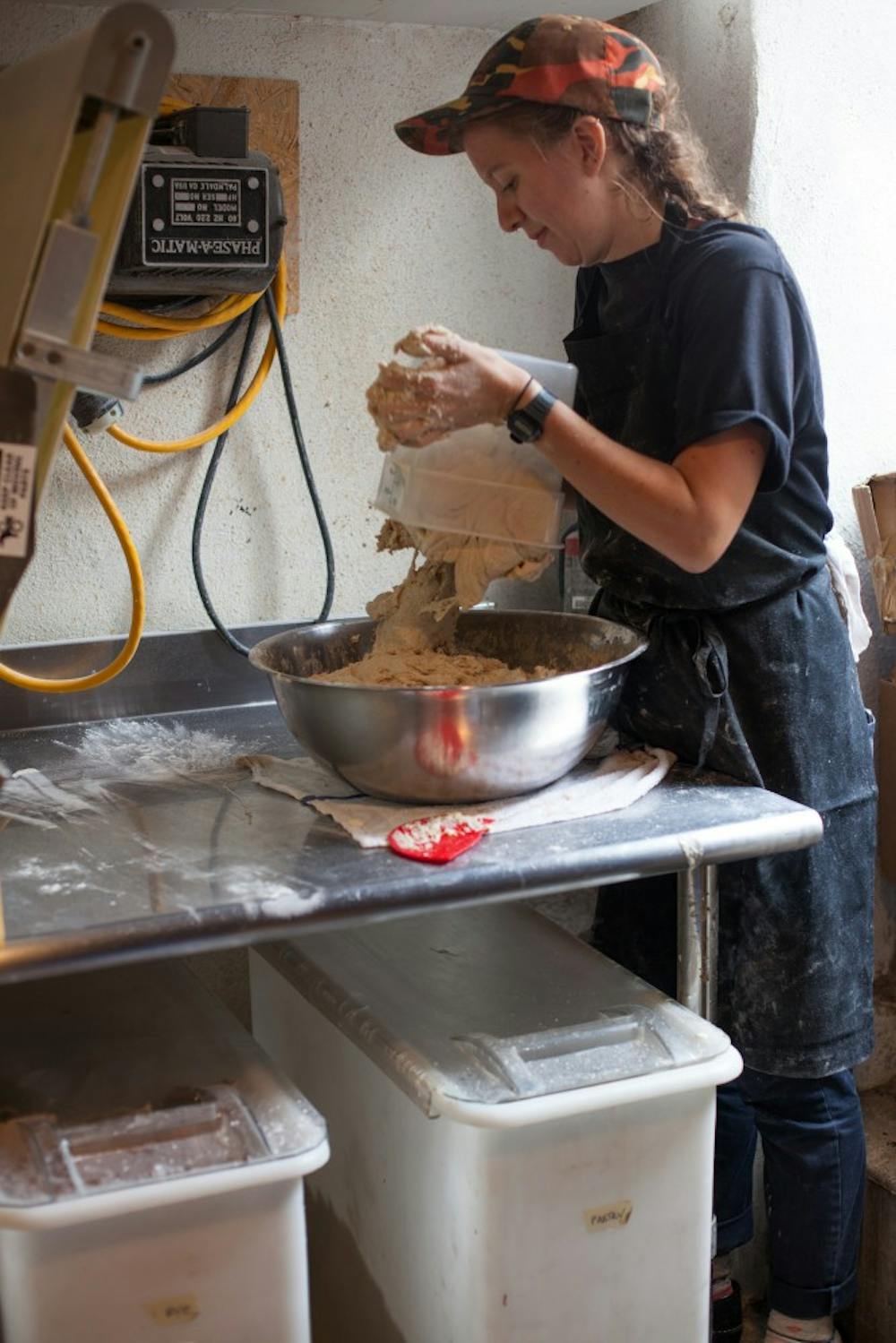
When the crew comes in, you stand with them as they open their tattered notebooks of recipes for tonight’s menu. Back straight, shoulders pushed back, chest over the table for three hours of prep until the dinner shift starts at five.
You peel garlic by hand, and then slice the ends off each before dicing them into smaller pieces. Then you peel the leaves off each herb by hand. You weigh pasta, slice mushrooms, and grate cheese; then you put each ingredient into a plastic container, labeling it with a piece of tape announcing the ingredient and date.
After each container is filled, you carry it to a line cook’s station. If you were on dinner shift already, you’d be taking it up to your station. But since it’s not your station, don’t touch anything.
A cook’s station is holy. It’s your mise en place, or your "meez," and it refers to your containers of ingredients, your knife, your towel, a bottle of Gatorade, a cutting board, and any other tool you might need. You have to have your mise en place, your shit in order.
Keep it clean and wiped down. The first orders of the night come in around 5:15, and you won’t survive if you don’t stay organized.
Watch the way the seasoned line cook next to you handles the broiler, the fryers, the oven, and all eight stove tops at once. This is the reason you’re still at brunch, and he’s here.
For most the night, he has different courses and dishes cooking in each one simultaneously; six different pans. Two plates in the oven. One plate in the broiler.
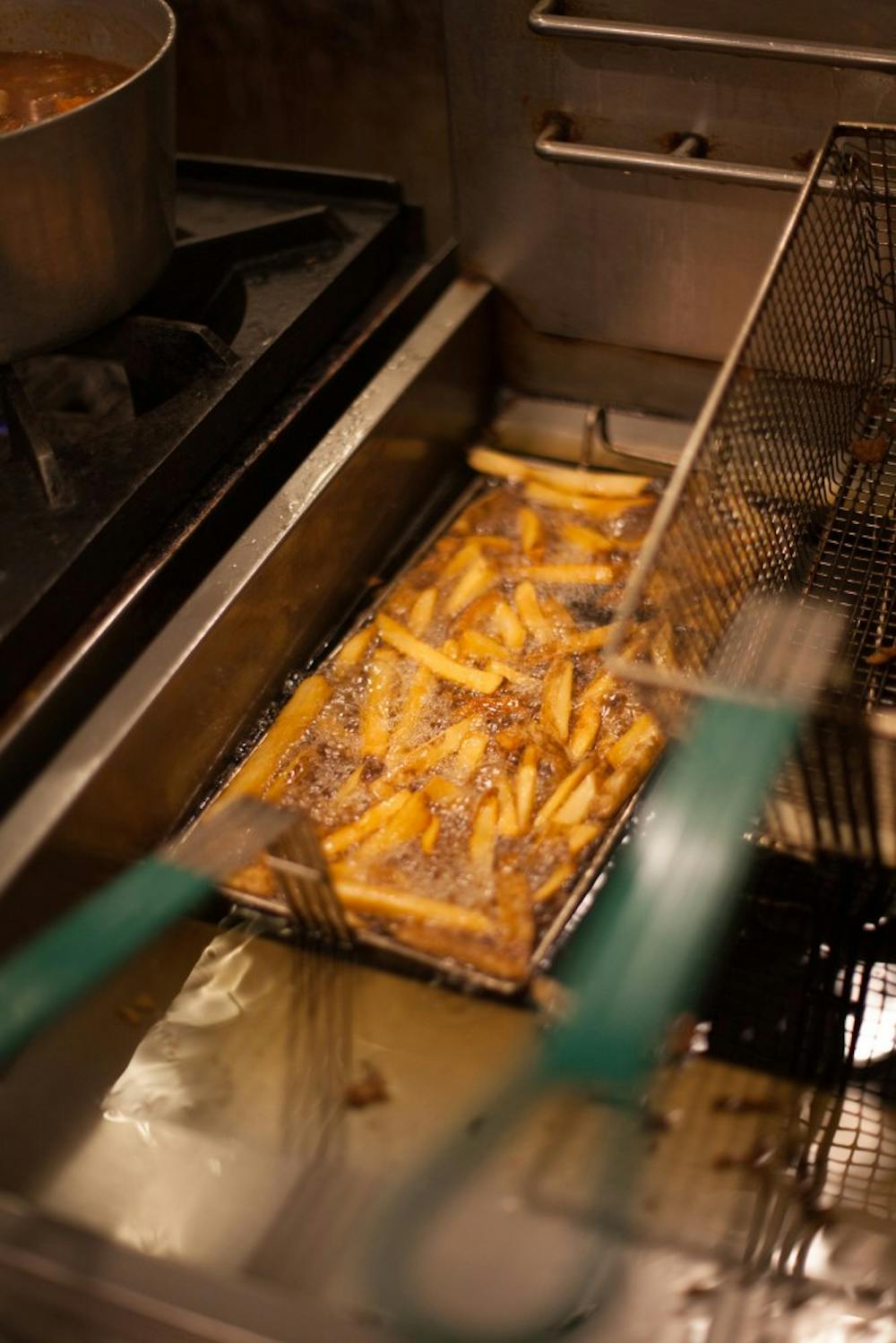
Some with mushroom tart filling, some with paprika sauce, some with butter sauce; meanwhile butter–braised cabbage and baked chicken are heating up on the stove top. His hands are always inches away from blue flames, surrounded in steam and smoke, mangled and burned, flying from one handle to another.
And then, shifting from one oven door, one spoon or knife, to the next in a blur.
When he has a moment of down time, when the noise of the ticket printer comes to a halt, he wipes down his station and grabs a broom to sweep the floor around it. But then another ticket screeches off, and he starts the cycle over again.
This is the glory of the dinner shift that awaits you after brunch.
Dinner: 5:00 p.m.–11:00 p.m. and beyond...
At eleven o’clock, the kitchen stops making food. But closing the kitchen doesn’t mean closing the restaurant. Even after all the customers are gone, leaving the warmth and chatter of the restaurant for the cool night air, there’s more for you to do in the kitchen.
The bakers will be in at 4:30 in the morning, and you’ll be in there until 1:30—at least—to clean the kitchen and take inventory.
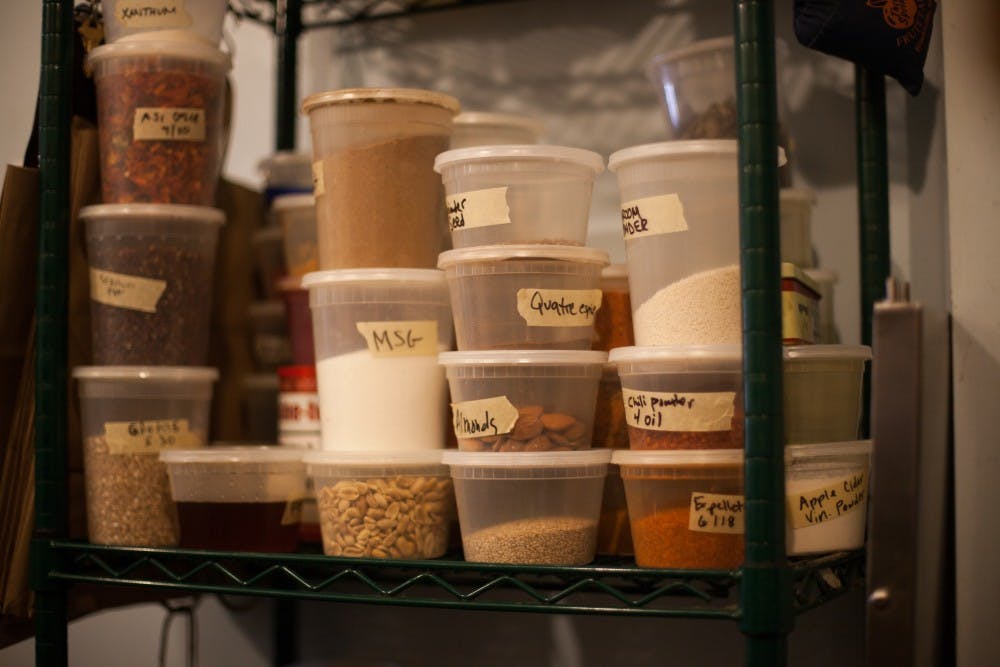
Note the way the line cook stands at his station staring blankly into space after ten hours of frenzy and 200 plates delivered to 200 stomachs. That cook is not tired.
He is just waiting for a waiter to bring the end–of–the–night beer before cleaning begins.
The rest of this night you will sweep, mop, and sweep again. Then you will organize all the ingredients into what was used and not used tonight. All the plastic containers of prep ingredients are labeled again, placed back in the walk–in fridge, or thrown out if they won’t still be fresh tomorrow.
This means an hour of making the kitchen spotless followed by an hour of walking up and down the stairs organizing the ingredients in the fridge. Then it’s back to the whiteboard. What do we have? What do we need to order?
Around 1:30, when you’re finally done cleaning, you can have your time off.
But where is the foie gras you ask? Where is the Chef’s Table Netflix music and the crisp tablecloths and all the details you would’ve expected to get from Philadelphia’s best restaurant? You want to hear how fabulously delicious the red plum frangipane tart is? Well you guessed it—that’s not the life of a line cook.
While the people who came to eat your food are soundly sleeping, your life begins. It could be at a pub in South Philly, a bar down on South street, or even Dave and Busters. There we can sit down and drink to how your first day went, make fun of the waiters or how angry the sous–chef got in the middle of the dinner shift, and bitch about how long the day was.
Because like any cook, you’ll be up tomorrow around noon, and be back at the restaurant around two for prep. Unless you're still working brunch, then you’ll be back in by 6 a.m.
